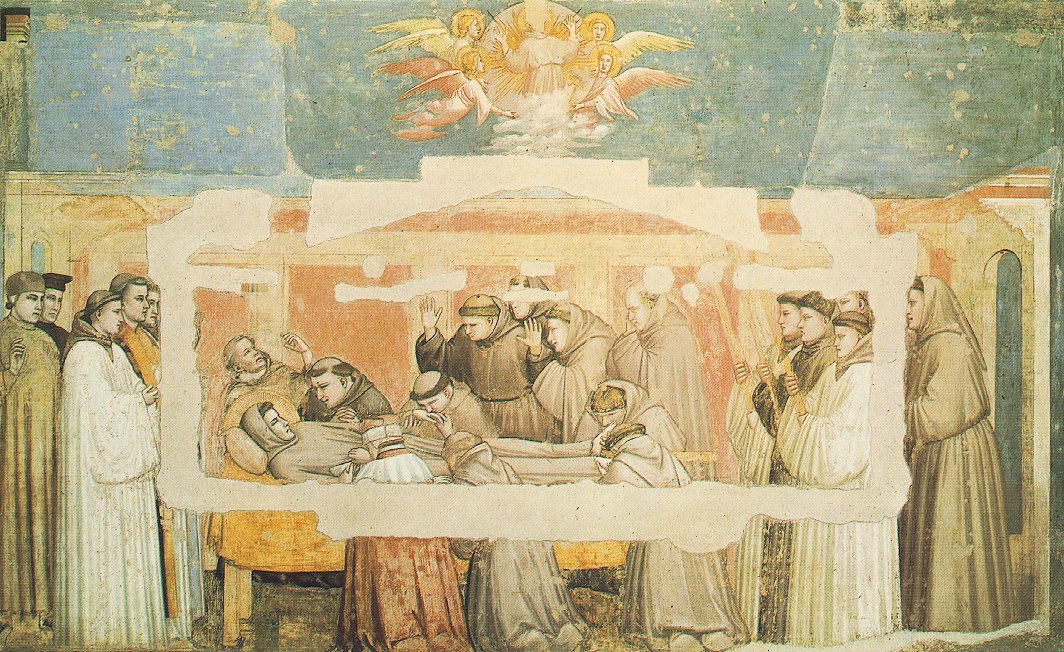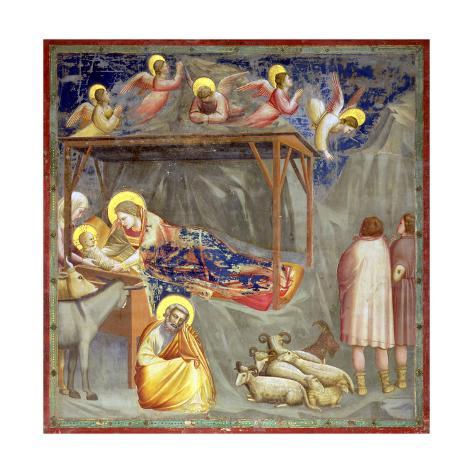Bondone Artist Study
As I was reading the biographical information on Bondone I realized I have seen his paintings in Italy! My husband and I took a wonderful trip (kind of a pilgramage) to Italy in 2006 and spent several days in Assisi, Rome, and several other Tuscan towns around Sienna! My children all have a Fransiscan cross hanging on their bed and my husband and I both love St. Francis and his story. This post is a narration from me after reading the section on Giotto in "A Journey into Christian Art" by Helen De Borchgrave.
The works recommended by the Ambleside Online curriculum can be found here, as well as links to other biographical texts!
Bondone loved nature and in his early life he was a shepherd. His talent was discovered when Cimabue, a painter, passed by and saw Giotto drawing a sheep on a stone. Cimabue was impressed with the natural talent and went to Giotto's father to request that he come with him to be his pupil.
Cimabue was famous for his Byzantine iconography - very colorful with gold leaf and other worldly characters. Giotto's paintings contrasted this delicate style. His characters were solid. They laughed and cried, kissed and killed. Giotto was inspired by classical art he saw on a visit to Rome. Early Christian basilicas were being restored and artists were painting the frescoes in the churches. Similar to the earlier mosaics, the frescoes illustrated the Christian message.

 (Cimabue's Mary on left, Giotto's Mary on right.)
Giotto's first project was in the Basilica of St. Francis. Cimabue, Duccio, and others had painted scenes from the Bible on the upper walls. Giotto was commissioned to paint scenes from St. Assisi's life on the lower section of walls.
(Cimabue's Mary on left, Giotto's Mary on right.)
Giotto's first project was in the Basilica of St. Francis. Cimabue, Duccio, and others had painted scenes from the Bible on the upper walls. Giotto was commissioned to paint scenes from St. Assisi's life on the lower section of walls.
 Giotto became a lay member of the Order of Franciscan Monks. He was close to the monks and impacted greatly at the death of Francis. His painting depicting the experience is in the Bardi Chapel in Santa Croce, Florence.
Giotto became a lay member of the Order of Franciscan Monks. He was close to the monks and impacted greatly at the death of Francis. His painting depicting the experience is in the Bardi Chapel in Santa Croce, Florence.
 The Arena Chapel in Padua is dedicated to the Virgin Mary. Giotto painted 13 episodes from the life of Mary, 26 from the life of Christ, and 14 panels of vices and virtues.
The Arena Chapel in Padua is dedicated to the Virgin Mary. Giotto painted 13 episodes from the life of Mary, 26 from the life of Christ, and 14 panels of vices and virtues.
 In the nativity scene, Mary reclines on a pallet similar to the old Byzantine iconography but Giotto modified the old pattern by twisting her body forward as she lays the baby in the manger. Joseph's knees are up while he sits and others and mentioned maybe that is a position that Giotto favored when he looked after sheep.
In the nativity scene, Mary reclines on a pallet similar to the old Byzantine iconography but Giotto modified the old pattern by twisting her body forward as she lays the baby in the manger. Joseph's knees are up while he sits and others and mentioned maybe that is a position that Giotto favored when he looked after sheep.
 In the Last Supper, Judas is hidden while Peter is lifting his robe to allow Jesus to wash his feet. This shows Christ's humanity and the Gospel message. The way Bondone paints them shows holiness and humility in perfect balance.
In the Last Supper, Judas is hidden while Peter is lifting his robe to allow Jesus to wash his feet. This shows Christ's humanity and the Gospel message. The way Bondone paints them shows holiness and humility in perfect balance.
 Giotto was a very humble man who never allowed others to call him "Maestro."
To download prints of this term, click here
Having this information is helpful as we do our artist study - I plan to talk to my son about St. Francis and his love for animals, and the fact that Giotto was a shepherd. A question like "How did he paint the animals in this picture" maybe a good prompt into narration while looking at a print!
For more artist study questions, see this post!
Giotto was a very humble man who never allowed others to call him "Maestro."
To download prints of this term, click here
Having this information is helpful as we do our artist study - I plan to talk to my son about St. Francis and his love for animals, and the fact that Giotto was a shepherd. A question like "How did he paint the animals in this picture" maybe a good prompt into narration while looking at a print!
For more artist study questions, see this post!

 (Cimabue's Mary on left, Giotto's Mary on right.)
Giotto's first project was in the Basilica of St. Francis. Cimabue, Duccio, and others had painted scenes from the Bible on the upper walls. Giotto was commissioned to paint scenes from St. Assisi's life on the lower section of walls.
(Cimabue's Mary on left, Giotto's Mary on right.)
Giotto's first project was in the Basilica of St. Francis. Cimabue, Duccio, and others had painted scenes from the Bible on the upper walls. Giotto was commissioned to paint scenes from St. Assisi's life on the lower section of walls.
 Giotto became a lay member of the Order of Franciscan Monks. He was close to the monks and impacted greatly at the death of Francis. His painting depicting the experience is in the Bardi Chapel in Santa Croce, Florence.
Giotto became a lay member of the Order of Franciscan Monks. He was close to the monks and impacted greatly at the death of Francis. His painting depicting the experience is in the Bardi Chapel in Santa Croce, Florence.
 The Arena Chapel in Padua is dedicated to the Virgin Mary. Giotto painted 13 episodes from the life of Mary, 26 from the life of Christ, and 14 panels of vices and virtues.
The Arena Chapel in Padua is dedicated to the Virgin Mary. Giotto painted 13 episodes from the life of Mary, 26 from the life of Christ, and 14 panels of vices and virtues.
 In the nativity scene, Mary reclines on a pallet similar to the old Byzantine iconography but Giotto modified the old pattern by twisting her body forward as she lays the baby in the manger. Joseph's knees are up while he sits and others and mentioned maybe that is a position that Giotto favored when he looked after sheep.
In the nativity scene, Mary reclines on a pallet similar to the old Byzantine iconography but Giotto modified the old pattern by twisting her body forward as she lays the baby in the manger. Joseph's knees are up while he sits and others and mentioned maybe that is a position that Giotto favored when he looked after sheep.
 In the Last Supper, Judas is hidden while Peter is lifting his robe to allow Jesus to wash his feet. This shows Christ's humanity and the Gospel message. The way Bondone paints them shows holiness and humility in perfect balance.
In the Last Supper, Judas is hidden while Peter is lifting his robe to allow Jesus to wash his feet. This shows Christ's humanity and the Gospel message. The way Bondone paints them shows holiness and humility in perfect balance.
 Giotto was a very humble man who never allowed others to call him "Maestro."
To download prints of this term, click here
Having this information is helpful as we do our artist study - I plan to talk to my son about St. Francis and his love for animals, and the fact that Giotto was a shepherd. A question like "How did he paint the animals in this picture" maybe a good prompt into narration while looking at a print!
For more artist study questions, see this post!
Giotto was a very humble man who never allowed others to call him "Maestro."
To download prints of this term, click here
Having this information is helpful as we do our artist study - I plan to talk to my son about St. Francis and his love for animals, and the fact that Giotto was a shepherd. A question like "How did he paint the animals in this picture" maybe a good prompt into narration while looking at a print!
For more artist study questions, see this post!


Comments
Post a Comment